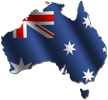Air traffic controllers manage the safe and orderly flow of aircraft into, out of and between airports in Australia. They also work with overseas regions adjoining Australian airspace.
Air traffic controllers operate in shifts, often out of normal office hours, and are required to work on any day of the year.
TASKS
- maintain radio contact with pilots to keep aircraft separated in 'corridors' of controlled airspace, on air routes and near major airports
- use radar to monitor and control aircraft movements
- ensure aircraft operate only on pre-arranged routes and at approved altitudes
- provide information and assistance to pilots and emergency services during in-flight emergencies
Air traffic controllers may perform the following tasks:
PERSONAL REQUIREMENTS
- able to make quick and accurate decisions
- aptitude for working with computers
- confident, highly responsible, self-motivated and independent, but able to work in a team
- good understanding and clear practical application of the English language
- Australian or New Zealand citizenship, or Australian permanent residency
- at least 18 years of age
- able to satisfy aviation medical requirements
SPECIALISATIONS
Enroute Controller - is responsible for the safe management of air traffic over most of the Australian mainland and on oceanic routes. The use of satellite and digital data communications is increasing in this type of control. Enroute controllers are employed in Brisbane and Melbourne.
Terminal Area Controller - uses radar to manage and arrange the flow of aircraft that arrive at and depart from major city airports. They are responsible for the controlled airspace surrounding an airport out to a distance of approximately 30 nautical miles. Terminal area controllers are employed in Adelaide, Cairns, Perth and Sydney.
Tower Controller - works from control towers at aerodromes and is responsible for all aircraft and vehicle movements on the taxiways and runways, as well as in the immediate surrounding airspace. There are 28 towers located at capital cities and busier regional airports around Australia.
To become an air traffic controller you usually have to gain your HSC/ACT Year 12 with passes in English, mathematics and a science subject (preferably physics).
Airservices Australia and the Royal Australian Air Force (RAAF) are the only trainers and employers of air traffic controllers in Australia.
Applicants for Airservices Australia must undergo a comprehensive selection process, including an online cognitive ability test, a computer-based aptitude test, an assessment day involving a competency-based interview, police checks, medical examinations and a drug test. Once selected, trainees undertake extensive training, covering theoretical and practical subjects as well as on-the-job instruction at the Learning Academy in Melbourne to complete the requirements for their Air Traffic Control Licence. Trainees are employed on a probationary basis while undergoing training, gaining a permanent position on successful completion of the course.
To become an air traffic controller with the RAAF you must first enter the Air Force as an officer and complete Air Force training courses in air traffic control. See the separate entry for Air Force Officer for further information.
EMPLOYMENT OPPORTUNITIES
Airservices Australia runs courses for air traffic control trainees in its Learning Academy throughout the year. The dates for these are advertised on the Airservices Australia website. Final selection for training is very competitive in both Airservices Australia and the RAAF.
Job opportunities depend on growth in air traffic and the introduction of new technologies.
Other Jobs by Interest Areas...
Job Search? Look for and press ENTER.
Remember: This is an EXACT match, so please use whole words only
This search looks for a match with the WHOLE keyword/s you enter. In other words, abbreviations like vet won't find veterinarian. Slang terms like brickie won't locate bricklayer 🙂
Please contact us to notify errors or suggest improvements.


















 Home
Home